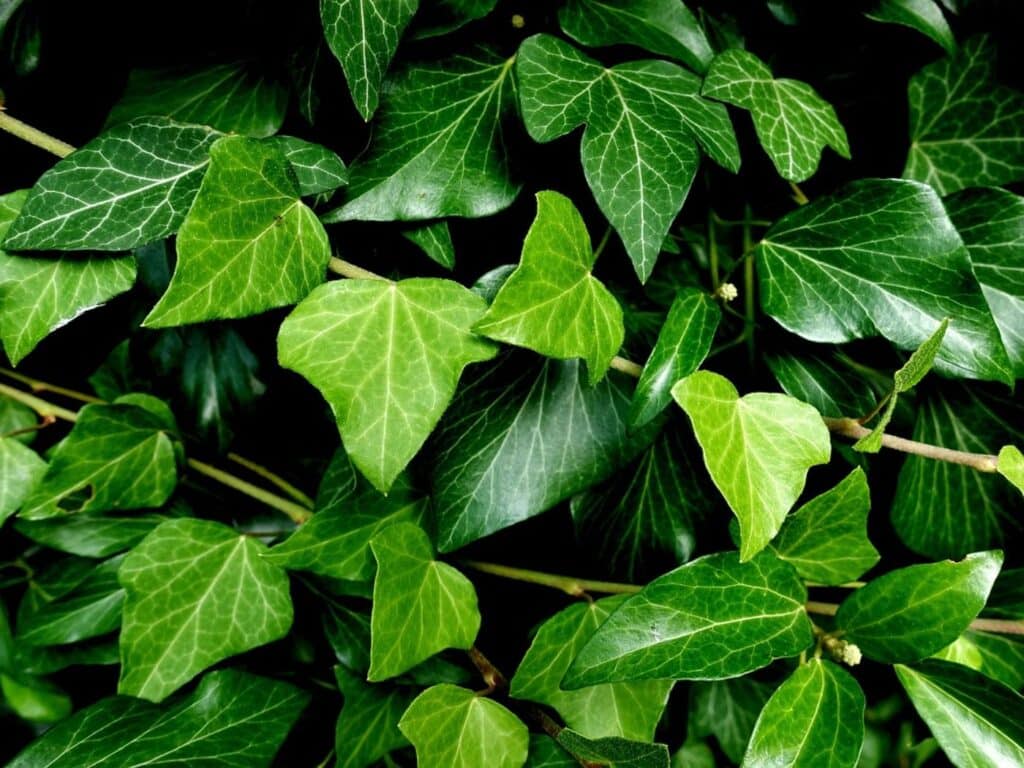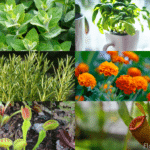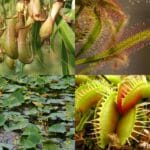You’ve carefully tended your ivy plant, giving it exactly the proper amount of sunlight, water, and affection. But you’ve recently observed a disturbing change: the previously vivid green leaves are becoming a sickening yellow. Before you worry, understand that this is a typical problem for plant owners.
In this article, we’ll delve into the possible reasons behind this color shift and how you can restore your ivy’s health. Whether it’s a nutrient deficiency, overwatering, or something more sinister, we’ve got you covered. So, let’s turn that plant frown upside down and get your ivy back to its lush, green glory.
Understanding Why Ivy Leaves Turn Yellow
Environmental Stressors and Their Impact on Ivy
Environmental conditions play a significant role in ivy leaf health. For example, extreme temperatures stress the plant, resulting in yellow leaves. Cold drafts in winter months and heat waves in summer both cause this stress, affecting the plant’s natural coloration.
Additionally, overexposure to sunlight or inadequate lighting can influence ivy leaves to turn yellow. Therefore, for thriving ivy plants, maintain a balanced room temperature and provide the right amount of light.
Nutrient Deficiencies That Lead to Yellowing Leaves
Nutrient deficits also contribute to leaf yellowing in ivy plants. A lack of essential nutrients, such as nitrogen or magnesium, often triggers discoloration. The deficiency stops chlorophyll production, an essential component that gives leaves their green color.
So, ensure your ivy gets the necessary nutrients regularly, usually found in well-balanced plant fertilizer, to avoid discoloration due to nutritional deficits.
The Role of Pests and Diseases in Yellowing Ivy Leaves
Pests and diseases are often the culprits behind the yellowing of ivy leaves, too. Spider mites and aphids, tiny insects that feed on plant sap, induce discoloration. Both pests lead to yellow spots forming on leaves.
Additionally, fungal diseases, such as anthracnose, cause ivy leaves to turn yellow. Detecting early signs of pests and diseases, treating them promptly, saves your ivy from severe damage and helps maintain its vibrant green shades.
How to Diagnose Yellowing Leaves in Ivy Plants

Examining Watering Habits
Correct watering practices sometimes serve as the key to maintain the health of your ivy plants. Overwatering or underwatering can cause the leaves to turn yellow.
Check the moisture level in the soil before watering—dehydrated soil needs a good soak, whereas soggy soil indicates overwatering. A balanced watering regime, neither too dry nor too damp, fosters optimum growth for your ivy plants.
Checking for Proper Light Conditions
Next, evaluate the light conditions where your ivy plant resides. Remember, ivy thrives in medium to bright light conditions but can tolerate low light as well. A plant placed in overly direct sunlight may develop burnt, yellow leaves.
Meanwhile, insufficient light could stifle the plant’s photosynthesis process, leading to leaf discoloration. Adjust the plant’s position to get an appropriate balance of light.
Identifying Common Pests and Diseases
Lastly, inspect the plant carefully for signs of pests or disease—both common culprits behind yellowing leaves. Look for small insects, like spider mites, or unusual spots or growths on the leaves indicative of diseases such as anthracnose.
Early detection and prompt treatment, using suitable pesticides or fungicides, can help save an ailing ivy plant from further decline and restore it to healthy greenery.
Preventive Measures and Solutions
Accurate diagnosis remains pivotal in restoring your once lush-green ivy plant to its former glory. However, prevention indeed surpasses rectification in importance when dealing with yellowing ivy leaves. This section deliberates on preventive actions and practical remedies.
Adjusting Water and Light to Prevent Yellow Leaves
Overwatering and inadequate light are prime culprits behind yellowing ivy leaves. To avert this, you’ve got to master managing irrigation and light to suit your ivy.
Remember, less often means better when it comes to watering ivy plants, aiming to keep their soil evenly moist but not excessively wet. Use your fingers to test the top inch of soil for dryness, and only water when it’s dry.
In terms of lighting, ivy plants generally appreciate bright, indirect light, though direct sunlight can scorch their leaves. Strive to find a balance, monitor plant response, and adjust accordingly.
The Importance of Proper Fertilization
Nutrient deficiency is another frequent reason for ivy leaves turning yellow. Crafting a healthy feeding plan for your ivy can work wonders in preventing this issue.
Regular application of a balanced, water-soluble fertilizer, particularly in the growing season, can provide essential nutrients that ivy plants crave. However, be cautious not to over-fertilize, this can lead to a build-up of salts in the soil which may cause the leaf edges to turn brown.
Natural Remedies and Treatings for Infestations
Last but not least is the menace of pests and diseases. Keeping a close eye on your ivy’s physical condition can signal the earliest signs of infestation. Spider mites, mealybugs, and scale insects are common culprits that often cause yellowing leaves in ivy plants.
Natural remedies, such as using neem oil or a homemade soap-water solution, can safely and effectively deal with these infestations, while also being considerate of the environment. Diseases such as leaf spot and root rot also need to be treated promptly, often necessitating pruning of the affected areas and the application of a suitable fungicide.
Incorporating these preventive measures and solutions, you can maintain your ivy plant’s health, ensuring vibrant green leaves that are an absolute delight to behold.
When to Consult a Professional
Navigating the diagnosis and treatment of your ivy’s health can sometimes lead to complexities. But, some situations are beyond personal gardening expertise and require professional help. Let’s dive into which situations call for an expert’s touch.
Recognizing Advanced Pests or Disease Symptoms
Often, damage from pests or diseases is first indicated by yellowing leaves. But, sometimes, you may notice symptoms that point towards a more severe issue.
These include significant leaf drop, wilting despite regular watering, anthracnose (spots on leaves), or damage that spreads quickly across the plant. In such cases, it’s vital to consult a professional. They have exhaustive knowledge and appropriate treatments to control advanced pest infestations or diseases effectively.
Understanding the Limits of Home Care
Over time, you may well face challenges in managing the health of your ivy plant that go beyond your grasp. Caring for ivy is not a one-size-fits-all process, nor is it a strict science. It’s an art that demands precise understanding and conditions tailored to the plant’s specific needs.
When home remedies don’t halt your ivy’s yellowing, a professional can give you robust solutions tailored to your plant’s condition. They not only bring experience but are also equipped to uncover the root cause of persistent plant health issues.
Remember, consulting a professional isn’t a sign of defeat, but rather a proactive step towards maintaining the health and vitality of your ivy.
Caring for Ivy Plants in Different Seasons
Seasonal Tips for Indoor Ivy Plants
Caring for your indoor ivy plant isn’t the trickiest task, but it helps to have some fundamental basics on hand. For example, during the warmer spring and summer months, keep the indoor ivy in a cool, well-lit area, away from direct sunlight.
Water the plant moderately, ensuring the soil remains moist. Cooling temperatures in fall require minimal watering due to slower growth rates. By the time winter approaches, your ivy plant’s need for water dips to a low, so take care to avoid waterlogging the plant.
Seasonal Tips for Outdoor Ivy Plants
Much like their indoor counterparts, outdoor ivy plants also require seasonal adjustments. Spring, with its ample sunlight and increased temperatures, often encourages growth.
Thus, regular watering during this period becomes a necessity – but be mindful about overwatering. Transitioning into summer, exposure to harsh or direct sunlight can be detrimental.
It’s a good strategy to shift the plants to shaded areas during peak hours. Ivy plants are hardy, but winter chills may cause yellowing leaves.
Protecting ivy with mulch or wrapping them in burlap gives them an edge against the cold. In fall, preparing for the winter ahead is key – reducing watering and conducting a timely plant health checkup staves off possible complications.
FAQs
Why is my ivy plant turning yellow?
Your ivy might be turning yellow due to environmental stressors such as extreme temperatures, too much or too little sunlight, and improper watering. Other causes might be nutrient deficiencies, pests, and diseases.
What are some preventive measures to protect my ivy plant?
You can protect your ivy plant by adjusting watering and light conditions appropriately, ensuring proper fertilization, and using natural remedies to defend against pests and diseases. Notice changes in your plant’s condition and take necessary measures promptly.
How should I care for my ivy plant in different seasons?
Maintaining indoor and outdoor ivy plants require adjusting care routines based on changes in temperature and sunlight. Moderation in watering and protection against extreme conditions are crucial, with specific seasonal tips provided in this article.
When should I consult a professional for my ivy plant care?
If your ivy plant experiences advanced issues that move beyond your expertise, it’s recommended to consult a professional. Proactive care helps maintain your ivy plant’s health and vitality throughout the year.
Up next: Calla Lily Leaves Turning Yellow? Causes and Effective Remedies







